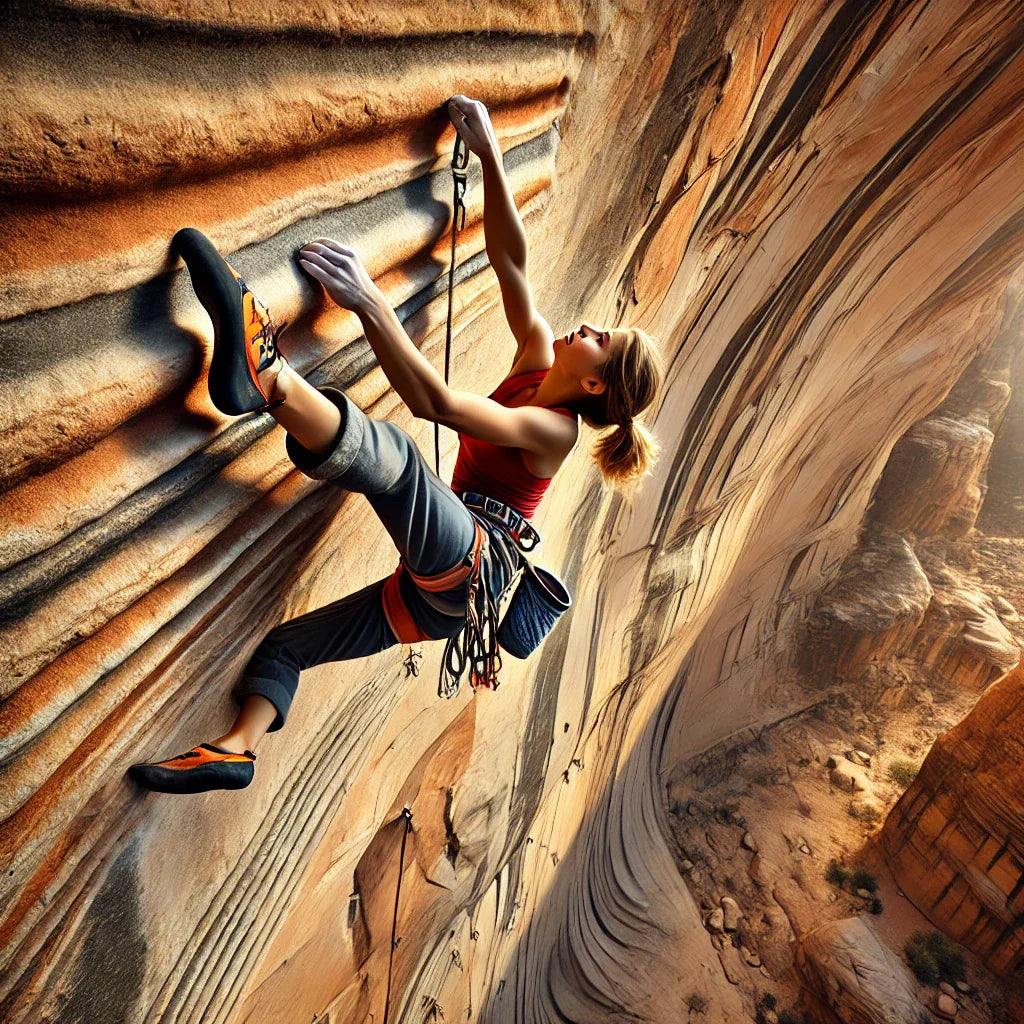
Clipping High in Lead Climbing: The Ultimate Guide to Smart, Safe Sends
Share
Lead climbing is equal parts exhilarating and nerve-wracking. Whether you’re clinging to an overhang or navigating a delicate slab, every move demands focus—especially when it comes to clipping the rope. One of the most debated techniques in a lead climber’s toolkit is clipping high, a method that can either save your send or send you plummeting. But when does this tactic make sense, and when is it a recipe for disaster? Let’s break it down.
Why Clipping High Isn’t Just About Showing Off
First, let’s clarify: Clipping high means extending your reach to attach the rope to a quickdraw above your natural clipping stance. Picture this: You’re mid-route, your feet are smearing, your grip is solid, and the next bolt is just slightly out of reach. Do you make an extra move to a higher hold for a comfy clip, or do you stretch up, clip now, and keep your momentum?
This dilemma is at the heart of the clipping-high debate. Done right, it streamlines your climb. Done wrong? Well, let’s just say gravity doesn’t forgive easily.
The Pros of Clipping High: When It’s Worth the Risk
1. Reduces Rope Drag (And Your Frustration)
Rope drag—the friction that builds as the rope snakes through quickdraws—can turn a smooth climb into a tug-of-war. On traversing routes or zigzagging bolt lines, clipping high creates a straighter path for the rope, minimizing drag. The American Alpine Club notes that reducing drag isn’t just about comfort; it prevents the rope from dislodging gear or pulling you off-balance.
2. Saves Energy for the Crux
Why waste energy scrambling to a “perfect” clipping stance when you can clip mid-move? On steep routes, clipping high lets you conserve power for harder sections above. As legendary climber John Long advises in Climbing Anchors, “Efficiency is the difference between sending and hanging.”
3. Dodges the Backstep of Doom
On overhangs, clipping high keeps the rope in front of your legs, avoiding a “backstep” (where the rope runs behind your calf). If you fall with the rope behind you, the force can flip you upside down—a terrifying scenario detailed in Climbing Magazine’s safety guide.
4. Keeps Your Flow Alive
Momentum matters. On dynamic routes, stopping to clip low can kill your rhythm. Clipping high lets you move fluidly, channeling your inner Adam Ondra as you dance upward.
The Cons of Clipping High: When It’s a One-Way Ticket to the Ground
1. “Why High Clip Is Dangerous”: The Fall Factor
Clipping high adds slack to the system. If you fall before the rope is clipped, you’ll plummet below the last bolt—potentially hitting the ground or a ledge. A 2021 study by the International Climbing and Mountaineering Federation found that falls with unclipped high bolts accounted for 18% of lead-climbing accidents.
2. The Fumble Factor
Stretching to clip while pumped or off-balance increases the chance of dropping the rope or missing the gate. As climber and coach Eric Hörst warns, “A botched clip wastes energy and shakes your confidence.”
3. Overextension = Instability
Reaching too far can shift your center of gravity, turning a secure stance into a teetering mess. Think of it like trying to open a jar while standing on one foot—it rarely ends well.
4. Pump City
Holding a high clip position burns precious forearm stamina. If you’re already gassed, you might not recover for the moves ahead.
When to Clip High: A Quick Reference Table
| Clip High Recommended | Avoid Clipping High |
|---|---|
| Steep overhangs (prevents backstep) | Near the ground (risk of ground fall) |
| Routes with heavy rope drag | Pumped or fatigued climbers |
| Next hold is far above | Delicate slab or balance moves |
| Confident, stable stance | Hazardous fall zones (ledges, rocks) |
How to High Clip When Lead Climbing: Pro Tips
-
Practice Like It’s Project Day
Drill clipping high at the gym or on easy routes. Use a portable hangboard to simulate extended reaches. -
Choose the Right Gear
Extended quickdraws (with a 12cm dogbone) give you extra reach, reducing strain. Brands like Petzl offer draws specifically designed for tricky clips. -
Assess, Don’t Guess
Ask: How far will I fall if I slip? Is the bolt spacing safe? If unsure, default to a lower clip. -
Stay Zen
Breathe, chalk up, and focus. Panic leads to rushed clips.
Is Lead Climbing Scary? Yes—And That’s Okay
Let’s address the elephant on the wall: Lead climbing is scary. The exposure, the responsibility, the gut-drop of a whipper—it’s normal to feel fear. But knowledge cuts anxiety. Understanding when (and how) to clip high transforms risk into strategy. As British climber Hazel Findlay puts it, “Fear isn’t your enemy; ignorance is.”
Final Thoughts: Clip Smart, Climb Harder
Clipping high isn’t inherently good or bad—it’s a tool. Use it when the pros outweigh the cons, and ditch it when the stakes are too high. Remember: The best climbers aren’t those who never fall, but those who know how to fall.
So next time you’re eyeing that bolt just out of reach, ask yourself: Is this clip worth the risk? Your answer could be the difference between a send and a splat.
Got questions or horror stories about clipping high? Share them in the comments!
References linked above. For further reading, check out The Rock Climber’s Training Manual or Alex Honnold’s MasterClass.